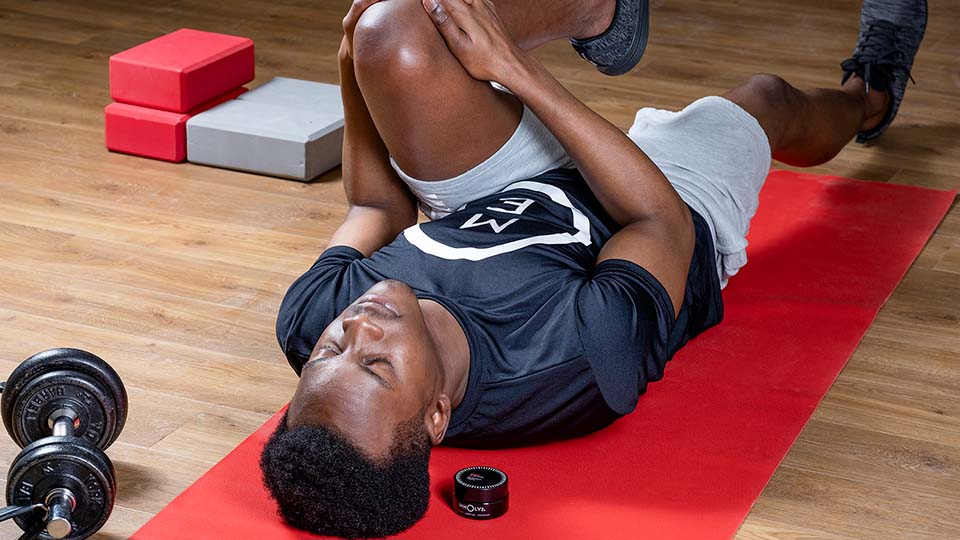Your cart is currently empty!


For devoted runners, there is nothing more disheartening than picking up injuries from running. Injuries can occur everywhere, from your hips to your Achilles tendon. However, suffering knee pain running is one of the most common forms of running injury.
In fact, the knee pain caused by running has its own name: runner’s knee.
Runner’s knee – or, to use the correct term, patellofemoral pain syndrome – is not a specific injury; rather an umbrella term for a collection of issues that cause knee pain.
In this article, we take a look at possible reasons why your knees hurt after running, as well as some ways to ease the pain, and typical runner’s knee recovery times.
Why do my knees hurt after running?
As mentioned, there is no single cause of runner’s knee. It may be multiple reasons and there are many possible culprits.
One of these is simple overuse. When you run, your knees are constantly in action, bending and straightening over and over again. Such repetitive action can cause irritation in the nerves of your kneecap, overstretching of the tendons, and erosion of cartilage, which can all result in pain.
Another potential issue is misaligned bones in your legs (from your ankles up to your hip), which can put extra pressure on the knee as you run.
Knee pain can also occur when your quadriceps (thigh muscles) are weak. These muscles – known as the quads – are tasked with keeping your kneecap in place as you bend your knee, as you do in running. With weak or tight quads, your kneecap may fall out of place and cause pain.
Meanwhile, don’t rule out direct impact to the knee from a fall or an accidental collision. However, if this was the cause of the pain, you would probably remember it happening.
These are just a handful of potential problems. Time to fix them.
How do I treat knee pain after running?
To effectively treat runner’s knee, tests to determine the root cause of the irritation will need to be carried out by a medical professional.
Seeking medical treatment is advised for serious pain, but you can often help yourself at home with a few smart actions. Recovery times vary depending on the cause of pain and the severity, although incorporating some of these actions should help speed things up.
Ice
Firstly, if you experience knee pain running or after you stop, apply ice to the affected area. Ice will reduce inflammation, which will ease pain and swelling. Aim to do this for around 30 minutes every few hours, for a few days.
Rest
As we have mentioned, knee pain can be caused by overuse. If possible, rest your knee to allow the pain to subside and healing to take place. Avoid running while you have knee pain, and keep other movement to a minimum. Elevate your leg on a pillow as you lie down.
Remedy
You can also add some helpful remedies to your treatment arsenal, such as our award-winning Relief Balm and Relief Salts.
WholyMe’s bestselling Relief Balm is an independently-tested highly-effective product that includes 12 evidence-based, all-natural ingredients such as arnica oil, rosemary oil and juniper oil, which can all help soothe soreness in joints like the knee. This balm proves very popular with athletes of all levels for a good reason – it works!
If you enjoy a soak in a warm bath, consider adding a few handfuls of our popular Relief Salts. Epsom salts like these are amazing for recovery, and we enhance them with calming essential oils like frankincense and eucalyptus, and proven recovery boosters like arnica oil.
Strength
It is also wise to work on strengthening your quads. Stronger quads will ensure that weak muscles are not the cause of pain in the knee.
Performing weighted squats and lunges at home or in the gym can help strengthen these important muscles. Hold a dumbbell or kettlebell at your chest, or a barbell across your back. Aim to perform 3 to 4 sets of 5 to 10 repetitions. If you blitz through 10 reps with no problem, increase the weight for the next set. If you are unsure, check out form videos online or chat to a personal trainer.
Stretch
Stretching your thighs to ease tightness is another way to combat knee problems. Save static quad stretches for after your run when your muscles are warm and flexible.
A standing quad stretch will see you use a wall or chair for support as you grab one foot behind your body and hold the stretch for 30 seconds. Repeat this twice for each leg. If in doubt, seek a physiotherapist for help.
***
Suffering knee pain is very unpleasant and it can be a big blow for your running progress – especially if you are training for an upcoming event.
However, using some preventative measures and tried-and-tested remedies like our effective Relief Balm and Relief Salts will give you the best chance of making a quick recovery!
